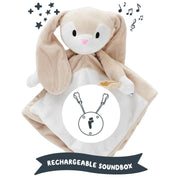When it comes to birthing your baby there are a range of options available to you. No two people are the same and no two births are the same. It is important that you are aware of what options are available to you, so that you can choose the best ones for your birth.
Most women focus all their energy on falling pregnant and then as soon as they find out they're pregnant, that focus shifts to… “How am I going to birth my baby?”I think it is important to first look at whether you prefer a vaginal birth or a caesarean birth.
Vaginal Birth
If a woman has no complications, a vaginal birth is usually the safest way to birth your baby. Vaginal birth involves a woman’s uterus (womb) contracting to birth the baby from the uterus out through the vagina. Vaginal birth can include the use of forceps or to assist. If you choose to have a vaginal birth, you can choose to not use pain relief or use a range of pain relief options, these will be described below.
TENS Machine
TENS stands for transcutaneous electrical nerve stimulation. A TENS Machine works by four electrode pads being stuck onto your back to send tiny electrical impulses under the skin, these impulses disrupt the normal pain pathway to the brain. Therefore, less pain signals will get to the brain. TENS machines have been shown to decrease labour pain without compromising the woman being able to mobilise thus, decreasing the length of the first stage of labour, allowing women to feel more in control and improving women’s satisfaction with their birth.
Water Immersion
Water immersion in labour involves using warm water in the form of a shower or bath to provide pain relief. Warm water can help you relax in between contractions, decrease the amount of stress hormones in labour and increase the amount of natural pain relief hormones (endorphins) produced by the body. Therefore, reducing the woman’s need for an epidural, reduce the length of labour and promote conservation of energy.
Birth Comb
The One Mama Midwife Birth Comb activates the Gate Control Theory of Pain similar to that of a TENS Machine. Squeezing the birth comb in the palm of your hand (along you acupressure points) when you get a contraction will cause a distraction, influencing the body’s pain perception. Squeezing the comb against your pressure points will encourage your body to release more of the natural pain relief hormones (endorphins).
Heat Packs
Using heat packs on either your abdomen or back (depending on where you feel your contractions) is a great way to reduce pain during labour. Signals from the heat pack on the abdomen, block some of the signals of pain from going to the brain. Therefore, reducing some of the pain of labour. It is important not to heat your heat pack up too hot so that you do not burn yourself.
Hypnotherapy
Hypnosis involves focusing attention inwards, while focusing on non-verbal and verbal communications. Hypnosis during labour may create a detachment from the pain of labour, promote relaxation and change the woman’s focus of the labour away from the pain. Some women use audio recordings to help them go into hypnosis during labour, while other women can learn self-hypnosis.
The Gas
The “gas” used for labour and birth is a mixture of nitrous oxide and oxygen – also known as “laughing gas”. You breathe the gas in through a mouthpiece or a mask and you should start to inhale the gas about 30 seconds before the start of your contraction to enable maximum drug effect at the peak of the contraction. Your midwife can change the composition of the gas to turn it up or down. The gas doesn’t take the pain of labour away, however it can be described as taking the “edge off”. The gas can be used during all stages of labour and in conjunction with other pain relief methods (even an epidural if it isn’t working effectively) and does not restrict mobilisation of labour. The gas enables women to feel more in control during their labour, thus reducing their pain perception. Side effects can include; dizziness, nausea, drowsiness, dry mouth, feeling like you’re not really present and vomiting. Studies have shown there are no side effects to the baby.
Sterile Water Injections
Sterile Water Injections are an effective tool for relieving back pain in labour. This procedure involves injecting a small amount of sterile water under the skin in four locations on the lower back. These injections cause an intense stinging sensation that lasts about 30 seconds and then it wears off causing relief from back pain. Relief from Sterile Water Injections lasts approximately 2 hours and has the benefit of having no side effects to the mother’s consciousness or to the baby. It can be repeated as needed and is a simple procedure administered by your midwife.
Morphine Injections
Morphine is an opioid, which is a strong pain relief given by injection. Morphine injections can take up to 20 minutes for you to notice any effect, with full effect seen by around 70 minutes and usually last about 2-4 hours. Morphine works by binding to the opioid receptors in the brain, changing the body's perception of the pain. Morphine will not take the pain of labour away, however it may give you enough relief to rest and conserve some energy. It may cause you to feel drowsiness, mental clouding, elation, or dysphoria. Morphine does transfer across the placenta to the baby and if the baby is born within 2 hours of morphine administration, they may require respiratory assistance. Babies who havebeen exposed to morphine in labour will have their observations taken every hour for the first four hours after birth.
Epidural Analgesia
An epidural is a local anaesthetic that is injected through a thin catheter (tube) placed carefully into the epidural space in your back, it does not go near the spinal cord. An epidural will mean that you have altered sensation from the waist down and can take away the pain of labour. The epidural is often connected to a pump as a continuous infusion, so that it does not run out. You will not be able to put weight on your legs, therefore you will need a catheter into your bladder as you will not be able to get up to go to the toilet. You will also need an IV drip in your hand to ensure you and baby are getting enough fluid and to assist with ensuring yourblood pressure does not drop. Once you have an epidural, your baby’s heart rate pattern will need to be monitored continuously with a CTG machine. Depending on the strength of the epidural, you should still be able to feel some of the pressure to push without the pain. Sometimes an epidural is recommended to you if you have high blood pressure or if you are stalling in labour, it can be recommended to help relax you and potentially aid in vaginal birth.
Caesarean Birth
A caesarean birth involves an operation being performed to birth your baby. A caesarean can either be an elective (choice) or an emergency (complications during pregnancy or labour). Some women (like myself) who know that they are going to need a caesarean section may opt to have a Maternal Assisted Caesarean (MAC). This is where the mother performs a surgical scrub technique, wears a sterile gown and sterile gloves and once the obstetrician has delivered baby’s head and shoulder, the mother reaches down to lift her baby up and directly onto her chest.
Your Birth
As you can see there are many options available for you for your birth. The good thing is you don’t need to know what you want to do before going into labour and you can try a range of these options to find what works for you. There is no one size fits all for labour, so experiment and find what works for you.

















































